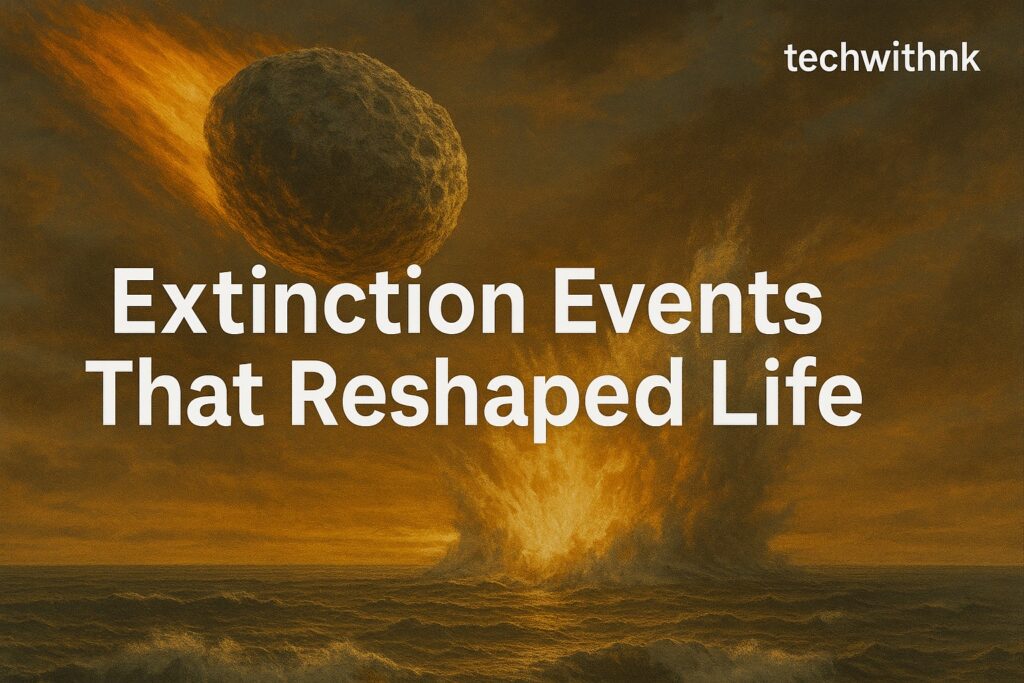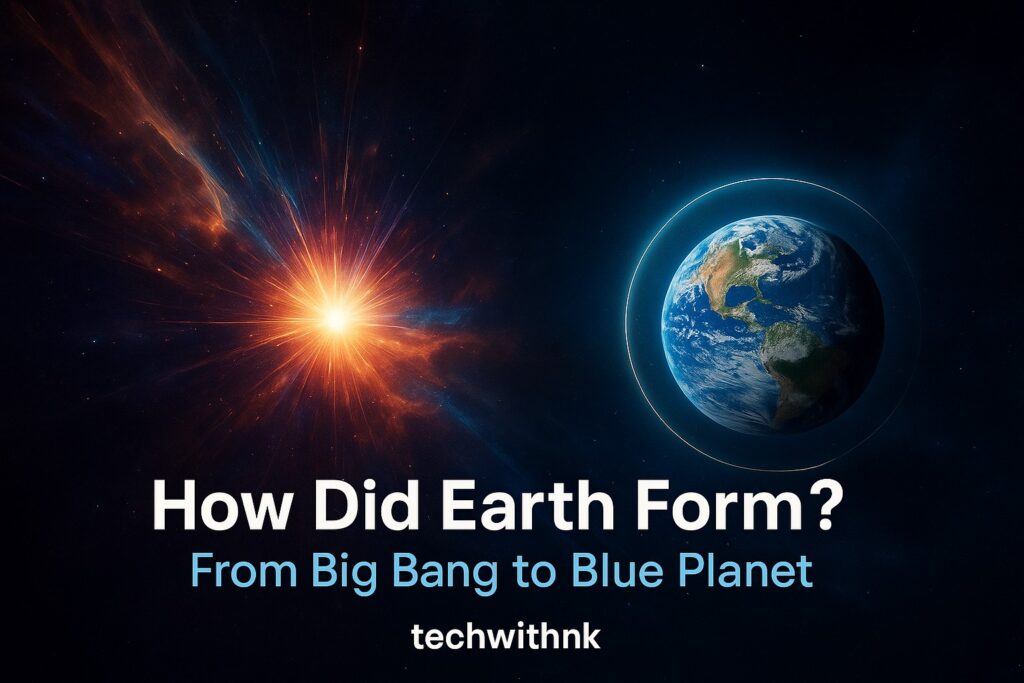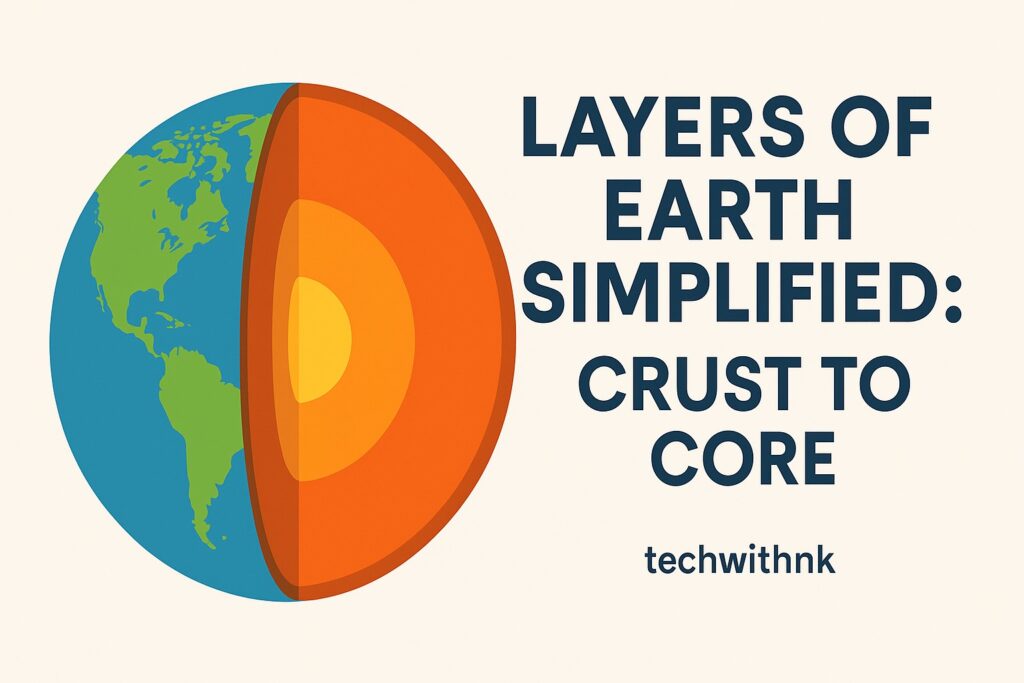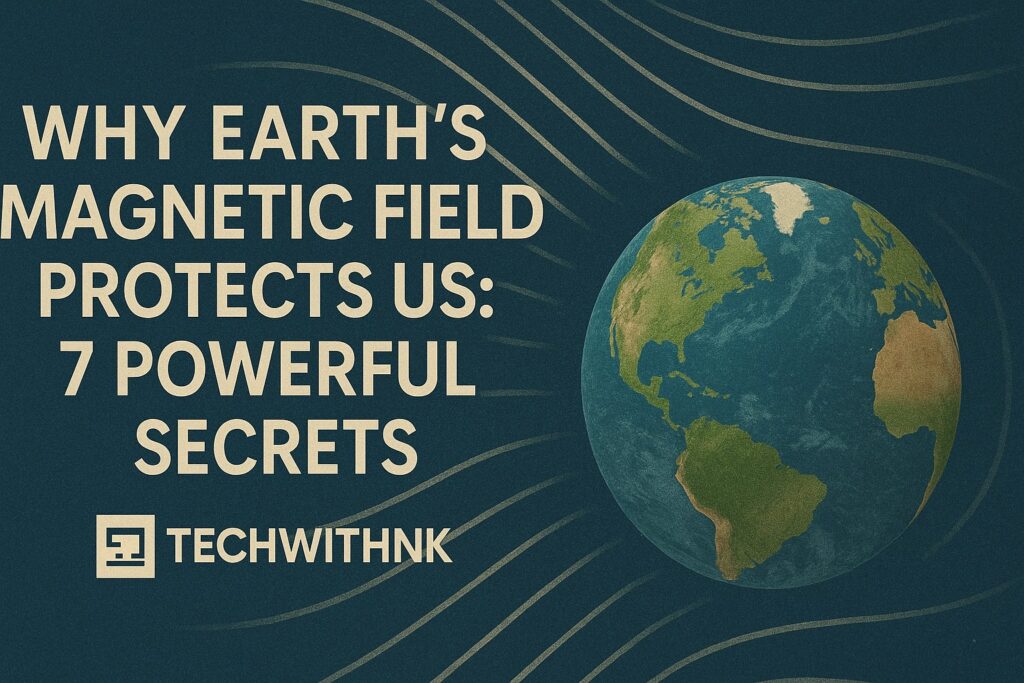Table of Contents
ToggleIntroduction: What Are Extinction Events?
Earth has witnessed the rise and fall of life over billions of years. However, every once in a while, nature hits the reset button — through events so catastrophic that they wipe out vast numbers of species in a geological blink of an eye. These extinction events have drastically altered the course of evolution, eliminating dominant species and allowing new ones to thrive.
In this article, we’ll explore the Big Five mass extinction events, other notable extinction crises, and how they reshaped the biosphere forever.
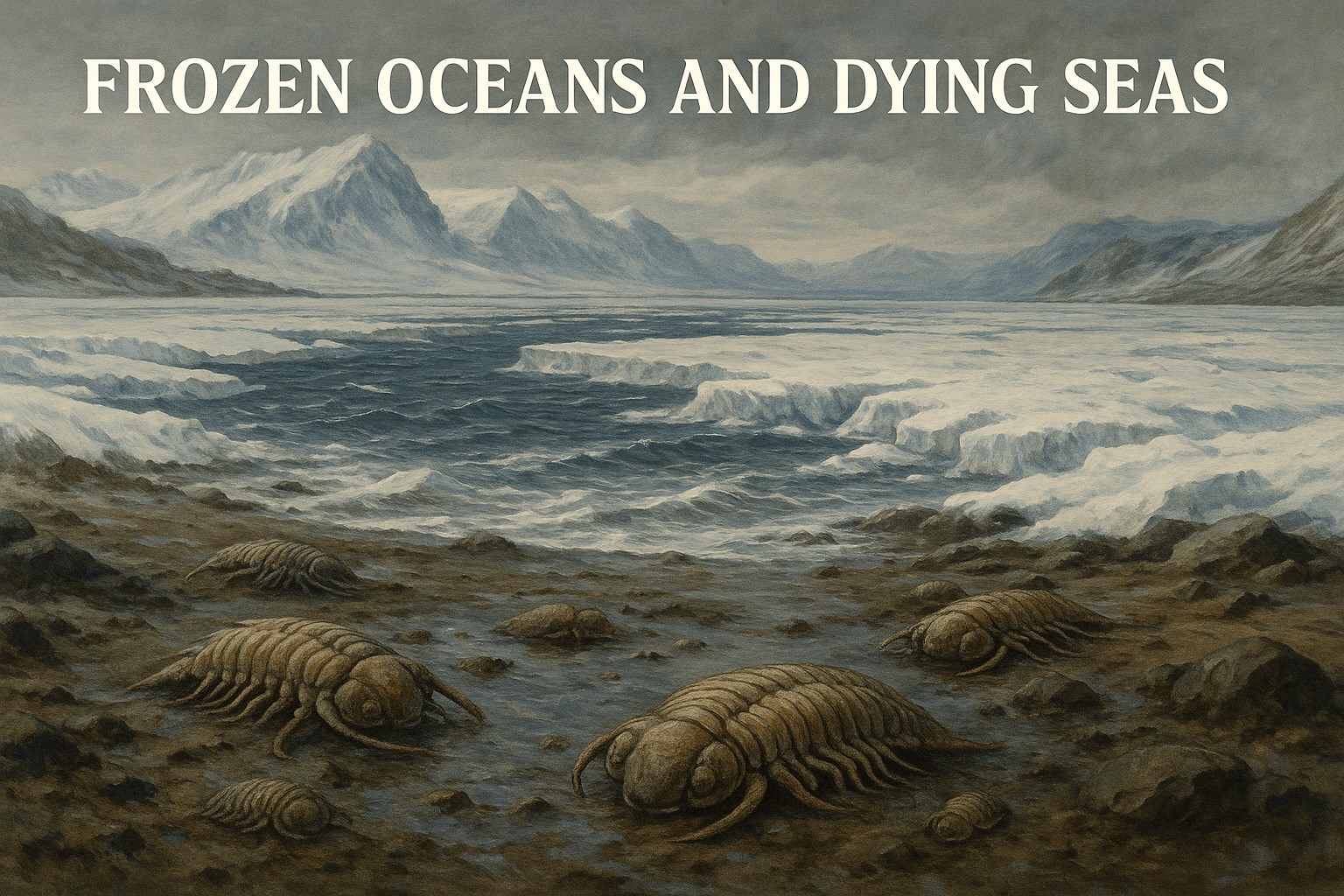
What Counts as a Mass Extinction Event?
A mass extinction event is defined as a relatively short period of geological time when at least 75% of Earth’s species go extinct. These events are often caused by sudden environmental changes, such as volcanic eruptions, asteroid impacts, or drastic climate shifts.
🌍 The Big Five Mass Extinctions
1. The Ordovician-Silurian Extinction (about 443 million years ago)
Percentage of Species Lost: ~85%
Cause: Sudden global cooling and falling sea levels
Impact: Marine life was hardest hit, especially trilobites, brachiopods, and coral reefs.
🧬 Life After: Survivors adapted to colder climates, and the event paved the way for jawed fishes.
2. The Late Devonian Extinction (about 375 million years ago)
Percentage of Species Lost: ~75%
Cause: Ocean anoxia (lack of oxygen), volcanic activity, and plant-driven climate changes
Impact: Coral reefs collapsed, and many fish species vanished.
🌱 Life After: The extinction led to the dominance of land plants and the rise of tetrapods (early land vertebrates).
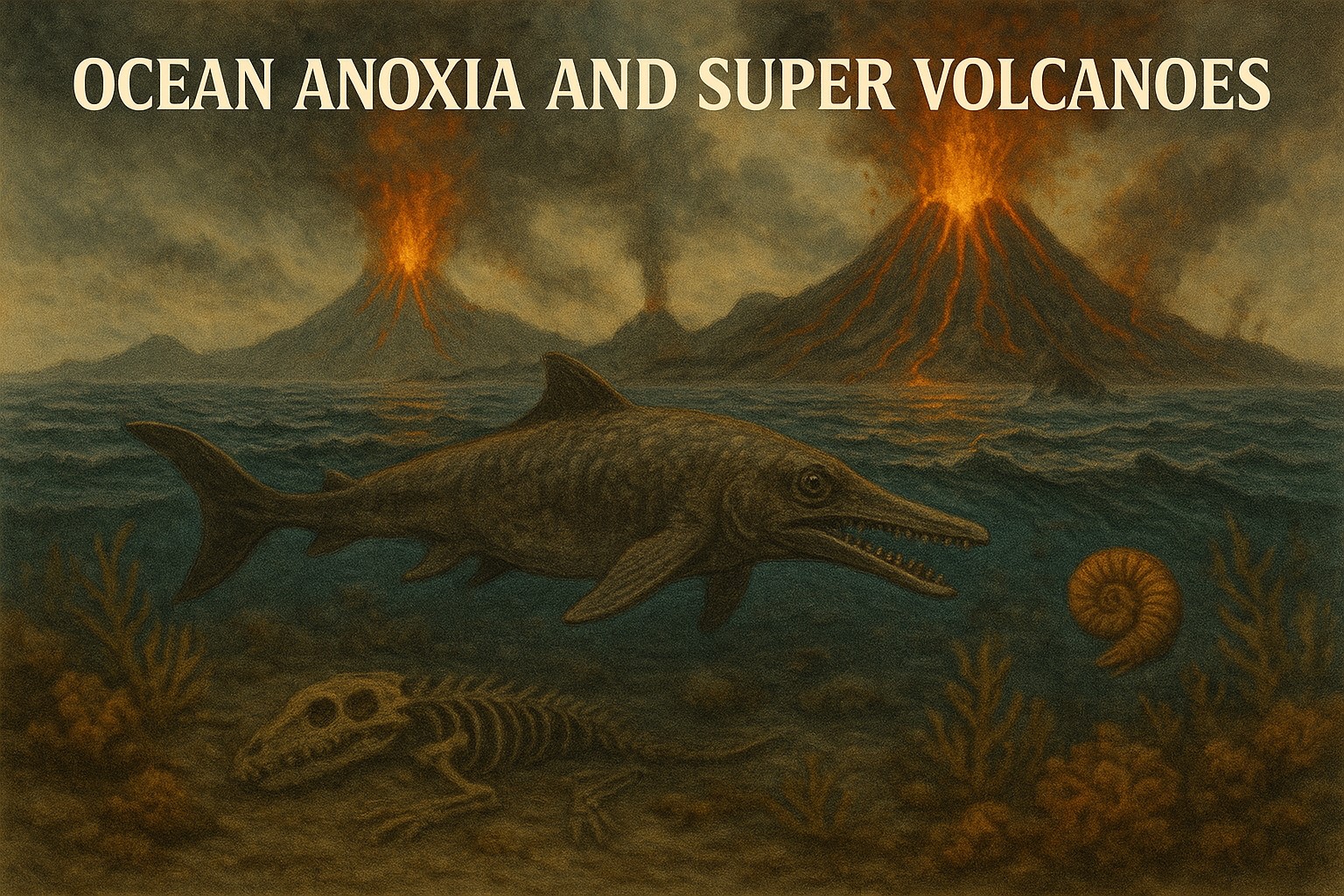
3. The Permian-Triassic Extinction (about 252 million years ago)
Also Known As: The Great Dying
Percentage of Species Lost: ~96% marine, 70% terrestrial
Cause: Massive volcanic eruptions in Siberia, CO₂ release, ocean acidification, global warming
Impact: This was the most devastating extinction event in Earth’s history.
🔥 Life After: Reptiles diversified, setting the stage for the rise of dinosaurs in the Triassic.
4. The Triassic-Jurassic Extinction (about 201 million years ago)
Percentage of Species Lost: ~80%
Cause: Volcanic activity linked to the breakup of Pangaea, CO₂ spikes, global warming
Impact: Marine reptiles, amphibians, and early mammal-like reptiles disappeared.
🦖 Life After: Dinosaurs rapidly expanded and dominated terrestrial ecosystems.
5. The Cretaceous-Paleogene (K–Pg) Extinction (about 66 million years ago)
Most Famous For: The extinction of the dinosaurs
Cause: Asteroid impact near Chicxulub (Mexico), followed by volcanic eruptions and climate chaos
Impact: ~75% of species, including all non-avian dinosaurs, went extinct.
🐦 Life After: Mammals filled the void, evolving into diverse forms — ultimately leading to humans.
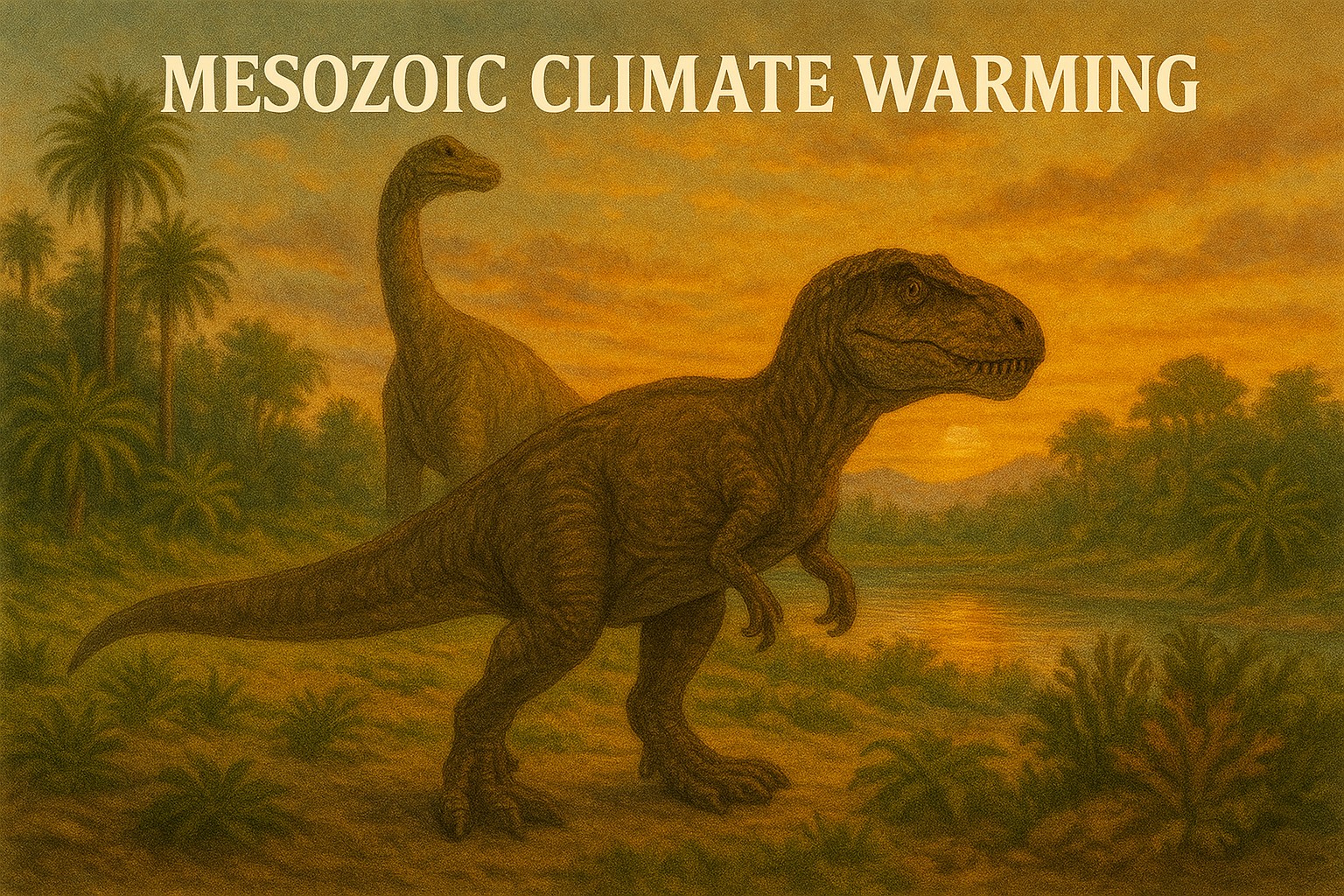
💥 Other Notable Extinction Events
🌋 End-Eocene Extinction (~34 million years ago)
Trigger: Climate cooling and glaciation
Impact: Marine plankton, tropical species, and many mammals vanished
🌡️ Pleistocene Megafauna Extinction (~10,000 years ago)
Victims: Mammoths, saber-toothed cats, giant sloths
Possible Causes: Climate change + overhunting by humans
🔍 Causes Behind Mass Extinctions
🪨 Asteroid Impacts
E.g., the Chicxulub asteroid that caused the dinosaur extinction. Impacts create shockwaves, fires, and dust clouds that block sunlight.
🌋 Volcanism
Massive eruptions (like the Siberian Traps) release CO₂ and sulfur dioxide, leading to acid rain and climate shifts.
🌊 Ocean Anoxia
Lack of oxygen in oceans suffocates marine life — often linked to warming seas or nutrient imbalances.
❄️ Global Cooling/Warming
Sudden climate changes can render ecosystems uninhabitable for many species.
👣 Human Activity (Modern Sixth Extinction)
Deforestation, pollution, overfishing, and climate change have triggered a modern wave of extinctions — one that is still ongoing.
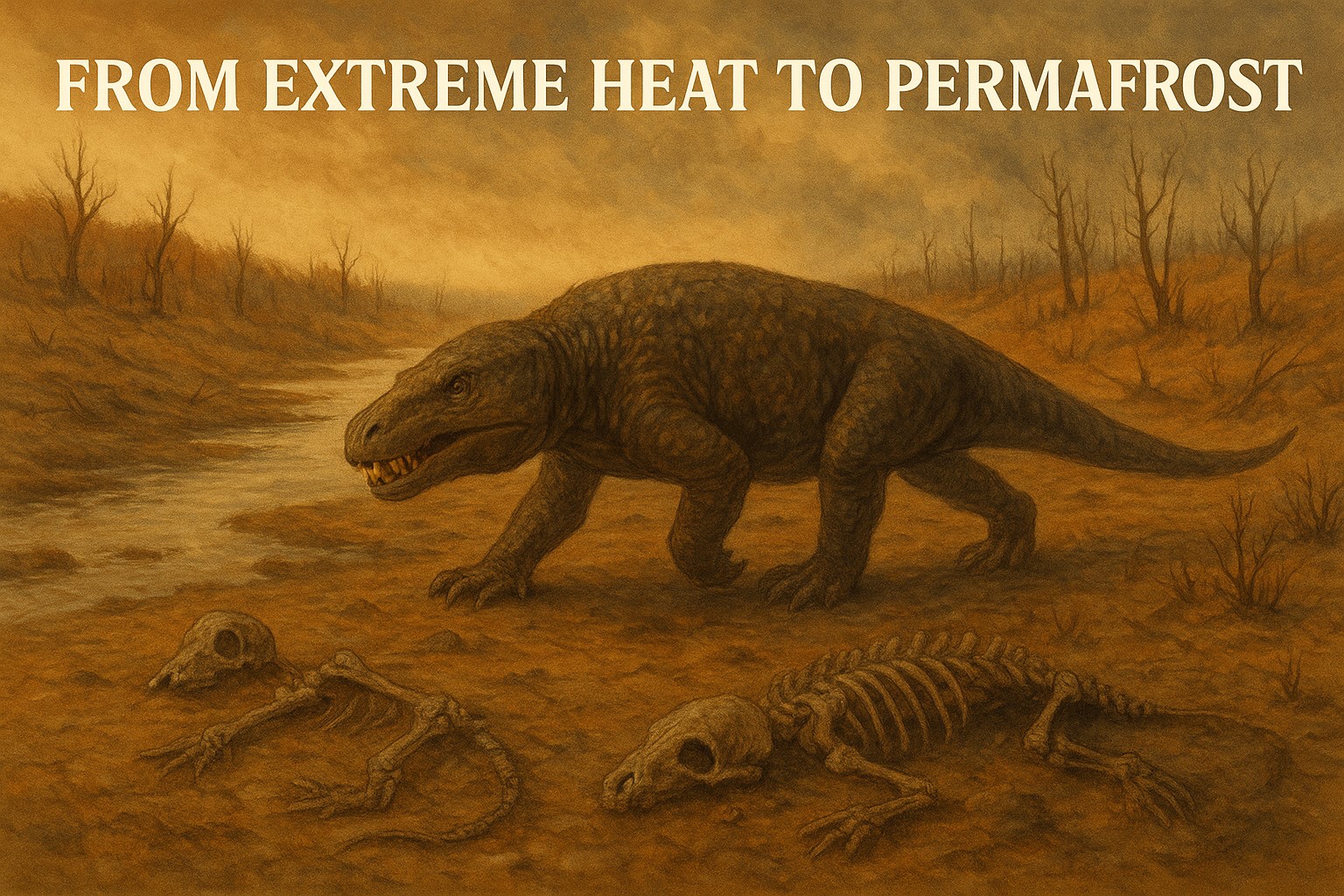
🧠 How Extinctions Reshape Evolution
Mass extinctions eliminate dominant groups, giving rise to evolutionary innovation. For example:
Dinosaurs vanished → Mammals evolved into diverse forms
Coral reef collapse → New reef ecosystems formed
Marine predator losses → Allowed smaller organisms to diversify
📈 Key Insight: Every extinction is also an opportunity for new life to evolve and flourish.
🧬 Could We Be Facing a Sixth Mass Extinction?
Yes — many scientists argue that we are currently in the midst of a human-driven extinction event:
1 million species are at risk of extinction
Wildlife populations have declined by over 69% since 1970 (WWF report)
Habitats are disappearing at alarming rates
⚠️ Urgent Action Needed: Conservation efforts, habitat protection, climate mitigation, and sustainable living are crucial to prevent irreversible loss.
ulvinar dapibus leo.
📊 Comparison Table of Major Extinction Events
| Event | Time (mya) | Species Lost | Cause |
|---|---|---|---|
| Ordovician-Silurian | ~443 | 85% | Cooling, sea level fall |
| Devonian | ~375 | 75% | Anoxia, volcanism |
| Permian | ~252 | 96% | Volcanism, warming |
| Triassic | ~201 | 80% | CO₂, climate change |
| Cretaceous | ~66 | 75% | Asteroid impact |
🧩 Fascinating Facts About Extinction Events
The Permian extinction killed 96% of marine species — Earth nearly lost all life.
Birds are the only living descendants of dinosaurs.
Most mass extinctions occurred over thousands of years — today’s human-driven one is happening much faster.
🌱 How Can We Prevent the Sixth Mass Extinction?
✅ Support biodiversity-friendly policies
✅ Choose sustainable food and products
✅ Reduce carbon footprint
✅ Protect and restore ecosystems
✅ Promote education and awareness
What is the biggest extinction event in history?
The Permian-Triassic extinction (~252 million years ago), also called The Great Dying, is the largest — it wiped out around 96% of marine and 70% of terrestrial species.
Are we in a sixth mass extinction?
Yes, many scientists believe we’re undergoing a human-driven sixth extinction, driven by habitat destruction, pollution, overexploitation, and climate change.
What caused the dinosaurs to go extinct?
A massive asteroid impact near present-day Mexico triggered fires, tsunamis, and global cooling, leading to the extinction of non-avian dinosaurs.
✅ Conclusion: Lessons from the Past
Extinction events have wiped Earth’s slate clean time and again — but they also shaped the world we live in. Every species alive today is a survivor of one or more planetary catastrophes.
Yet, the current crisis is unlike anything in history — it’s driven not by nature but by human hands. The choice is ours: to become stewards of life or the architects of another great extinction.
🌍 Let’s learn from the past to protect the future.

